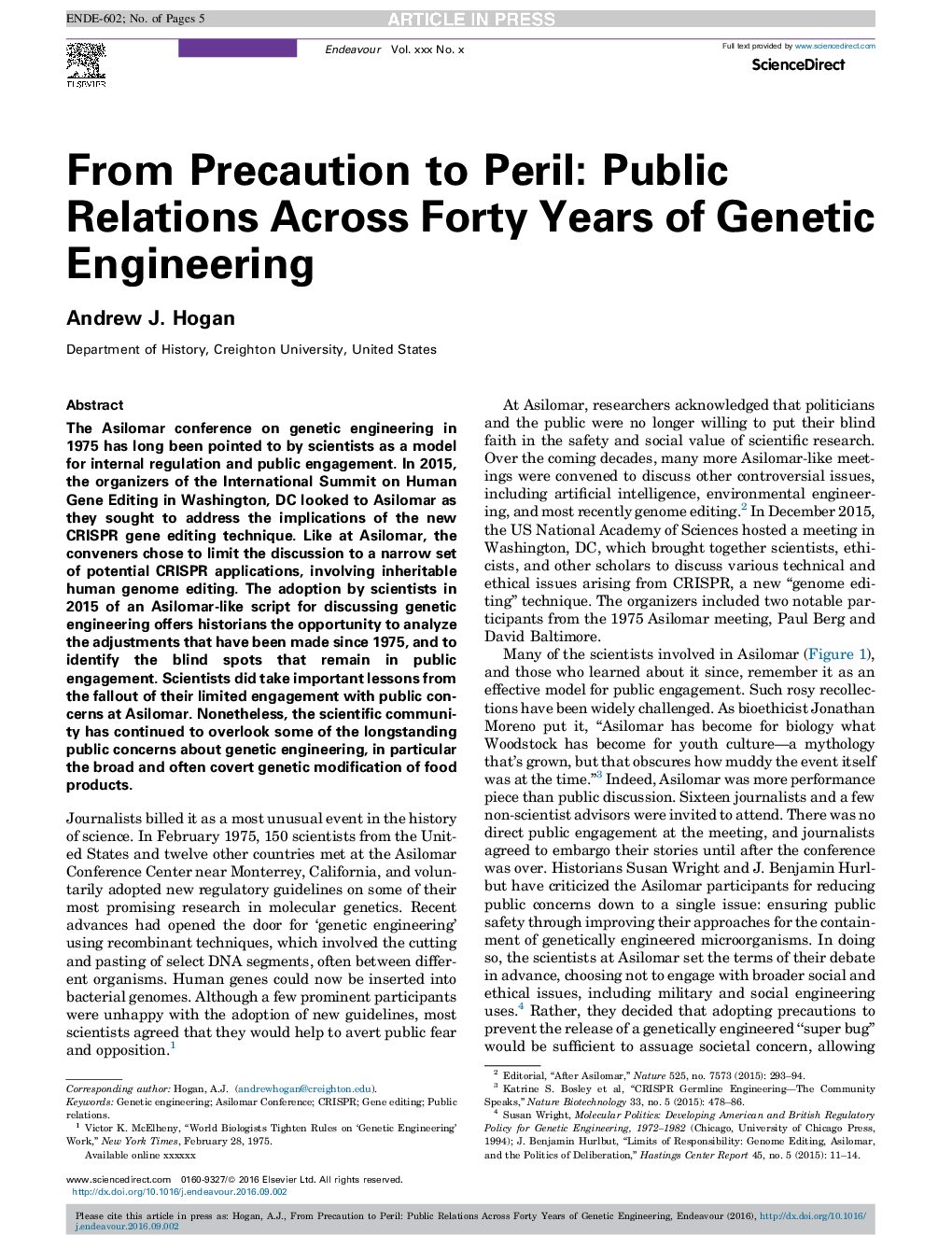| Article ID | Journal | Published Year | Pages | File Type |
|---|---|---|---|---|
| 7550928 | Endeavour | 2016 | 5 Pages |
Abstract
The Asilomar conference on genetic engineering in 1975 has long been pointed to by scientists as a model for internal regulation and public engagement. In 2015, the organizers of the International Summit on Human Gene Editing in Washington, DC looked to Asilomar as they sought to address the implications of the new CRISPR gene editing technique. Like at Asilomar, the conveners chose to limit the discussion to a narrow set of potential CRISPR applications, involving inheritable human genome editing. The adoption by scientists in 2015 of an Asilomar-like script for discussing genetic engineering offers historians the opportunity to analyze the adjustments that have been made since 1975, and to identify the blind spots that remain in public engagement. Scientists did take important lessons from the fallout of their limited engagement with public concerns at Asilomar. Nonetheless, the scientific community has continued to overlook some of the longstanding public concerns about genetic engineering, in particular the broad and often covert genetic modification of food products.
Related Topics
Social Sciences and Humanities
Arts and Humanities
History
Authors
Andrew J. Hogan,
